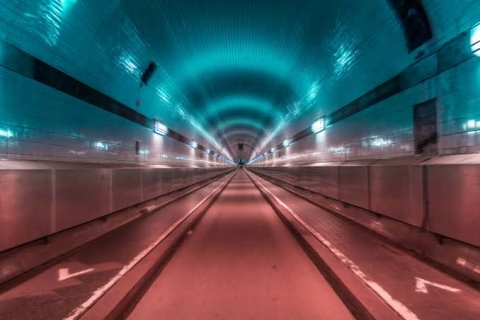Nigeria is planning construction of Africa’s first underwater tunnel, a project set to dramatically reshape transportation in Lagos State and across the country. Proposed by the Federal Government, the tunnel is designed to run for approximately 2.9 to 3.5 kilometers, connecting Ahmadu Bello Way in Victoria Island, going beneath the Lagos Lagoon, and linking to Snake Island, with a further extension toward Badagry.
This vital piece of engineering will serve as a key junction, integrating the massive Lagos-Calabar Coastal Highway with the Sokoto-Badagry Superhighway. The project is intended to be executed under a Public-Private Partnership (PPP) model, leveraging land resources to fund its development. Beyond its logistical benefits such as easing congestion on existing Lagos bridges, the tunnel is a flagship component of the nation’s broader vision to enhance inter-regional trade and national cohesion, proving that when it comes to infrastructure, Nigeria is aiming to be a continental pacesetter.

In another similar tunnel projects that will also revolutionize transportation in Africa, Morocco is gearing up for the development of Morocco-Spain rail tunnel. This ambitious tunnels is currently at the feasibility studies. Lately, it was revealed by Spanish government that the project is technically feasible therefore allowing the project to proceed.
The Federal Government of Nigeria has announced plans to build what could become Africa’s First Underwater Tunnel. This tunnel will connect the ongoing Lagos-Calabar and Sokoto-Badagry highways.
Africa’s First Underwater Tunnel Project Factsheet
Location: Lagos, Nigeria, specifically connecting Ahmadu Bello Way in Victoria Island, running through the Lagos Lagoon to Snake Island, and then extending to Badagry.
Length: The tunnel is planned to be 2.9 to 3.5 kilometers long.
Engineering: The tunnel will run beneath the water, making it the first of its kind in Africa.
Connectivity: The tunnel will be part of a larger 61-kilometer stretch that connects to the two major highways.
Project status: announced by the Federal Government of Nigeria as a key infrastructure initiative. The project is currently in the planning and design phase.
Key stakeholders:
- Federal Government of Nigeria: The project is a federal initiative, with the Minister of Works, David Umahi, as a key proponent.
- Public-Private Partnership (PPP): The project is planned to be executed under a PPP arrangement, using land resources around Snake Island and Badagry to fund the initiative.
Length of the Tunnel
Speaking during an inspection tour in Lagos on Wednesday, David Umahi, the minister of works, stated that the tunnel will run for 2.9 kilometres. Additionally, he revealed that it would link Ahmadu Bello Way to Snake Island and extending to Badagry.
“Our tunnel is inside the ground. It is going to have a length of 2.9 kilometres. Upon completion, it is going to be the first tunnel in Africa inside water,” Umahi revealed.
The Tunnel to be Executed Under Public-Private Partnership
The minister further explained that the project would be executed under a Public-Private Partnership (PPP) arrangement. Additionally, the project will use land resources around Snake Island and Badagry to fund the initiative.
According to Umahi, the tunnel plan is part of a broader vision to link the coastal route with the Sokoto–Badagry corridor. Therefore, this will improve connectivity and easing pressure on existing Lagos bridges.

